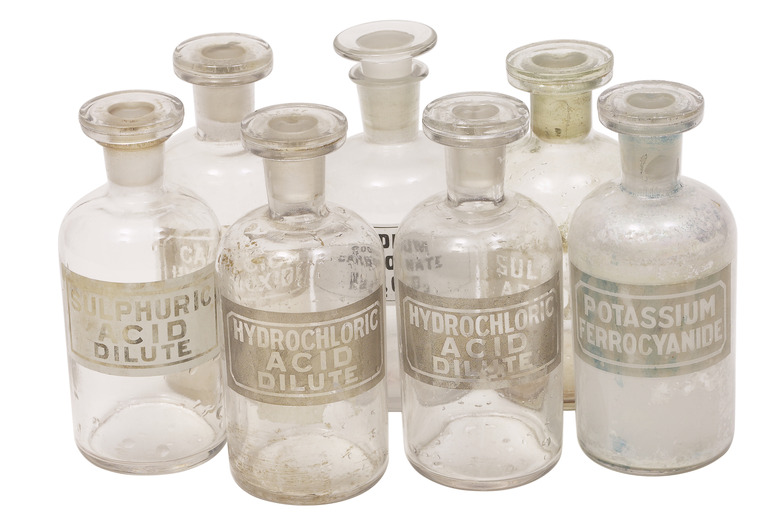The Two Types Of Exocrine Secretory Cells In The Stomach
The stomach is an organ of the digestive system. The inner wall of the stomach contains small pores called gastric pits. These pits contain cells that secrete chemicals that digest food. The two main types of exocrine secretory cells of the stomach are parietal cells and chief cells. Parietal cells secrete hydrochloric acid and chief cells secrete digestive enzymes such as pepsin. These cells secrete their products when activated by signals from the body such as hormones and neurotransmitters.
Parietal Cells
Parietal Cells
Parietal cells are the exocrine cells of the stomach that secrete hydrochloric acid (HCl). HCl makes the inside of the stomach very acidic, which helps to digest proteins by causing them to unfold. Parietal cells secrete HCl at a concentration of 160 mM, which is a pH of 0.8. However, due to other factors in the stomach, the pH of the stomach as a whole is 1 to 3. HCl is made of a hydrogen ion (H+) and a chloride ion (Cl-). The hydrogen ion is what makes the stomach acidic. The secretion of the parietal cells contains 3 million times more hydrogen ions than there are hydrogen ions in the bloodstream.
Control of Parietal Cell Secretion
Control of Parietal Cell Secretion
Parietal cells secrete hydrochloric acid when stimulated by hormones such as gastrin, molecules such as histamine (which causes allergies) and neurotransmitters from nerve cells such as acetylcholine. The parietal cell contains protein receptors for each of these activating signals on its surface. Each signal by itself does not cause a lot of acid secretion, but when all three signals are present — even at low levels — a massive secretion program is activated. Drugs have been developed that can block acid secretion in the stomach by blocking the receptors of each of these three signals.
Chief Cells
Chief Cells
The other type of exocrine secretory cell in the stomach is the chief cell. Chief cells secrete digestive enzymes that cleave the proteins in food into smaller pieces. The main enzyme secreted by chief cells is pepsin. Pepsin is secreted as an inactive enzyme called pepsinogen. Pepsinogen becomes active when it encounters an acidic environment and is cut apart. Pepsin has at least 8 isoenzymes — different forms of an enzyme that do the same job. The most abundant pepsin isozymes are secreted by the chief cells, while other cells in other regions of the stomach lining secrete the other isozymes.
Control of Chief Cell Secretion
Control of Chief Cell Secretion
Chief cells start secreting digestive enzymes when they are activated by hormones and neurotransmitters. Activating hormones include secretin, vasoactive intestinal peptide and gastrin. Neurotransmitters include epinephrine and acetylcholine. Secretin, vasoactive intestinal peptide and epinephrine cause enzyme secretion in chief cells by elevating the level of a molecule called cyclic AMP (cAMP). Gastrin and acetylcholine cause secretion by elevating the level of calcium ions in the chief cells. Pepsinogen secretion can been artificially blocked by drugs that antagonize — meaning inhibit — the activity of these hormones and neurotransmitters.
Cite This Article
MLA
Ph.D., David H. Nguyen,. "The Two Types Of Exocrine Secretory Cells In The Stomach" sciencing.com, https://www.sciencing.com/two-types-exocrine-secretory-cells-stomach-17240/. 16 July 2018.
APA
Ph.D., David H. Nguyen,. (2018, July 16). The Two Types Of Exocrine Secretory Cells In The Stomach. sciencing.com. Retrieved from https://www.sciencing.com/two-types-exocrine-secretory-cells-stomach-17240/
Chicago
Ph.D., David H. Nguyen,. The Two Types Of Exocrine Secretory Cells In The Stomach last modified March 24, 2022. https://www.sciencing.com/two-types-exocrine-secretory-cells-stomach-17240/
